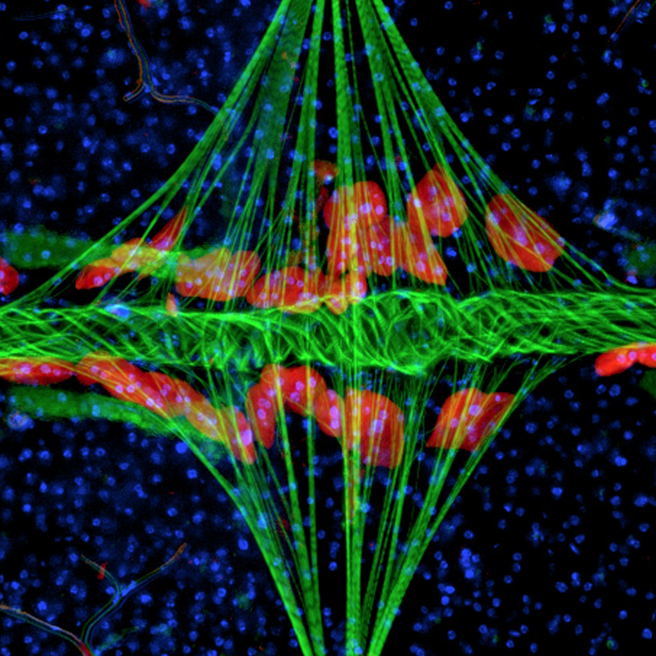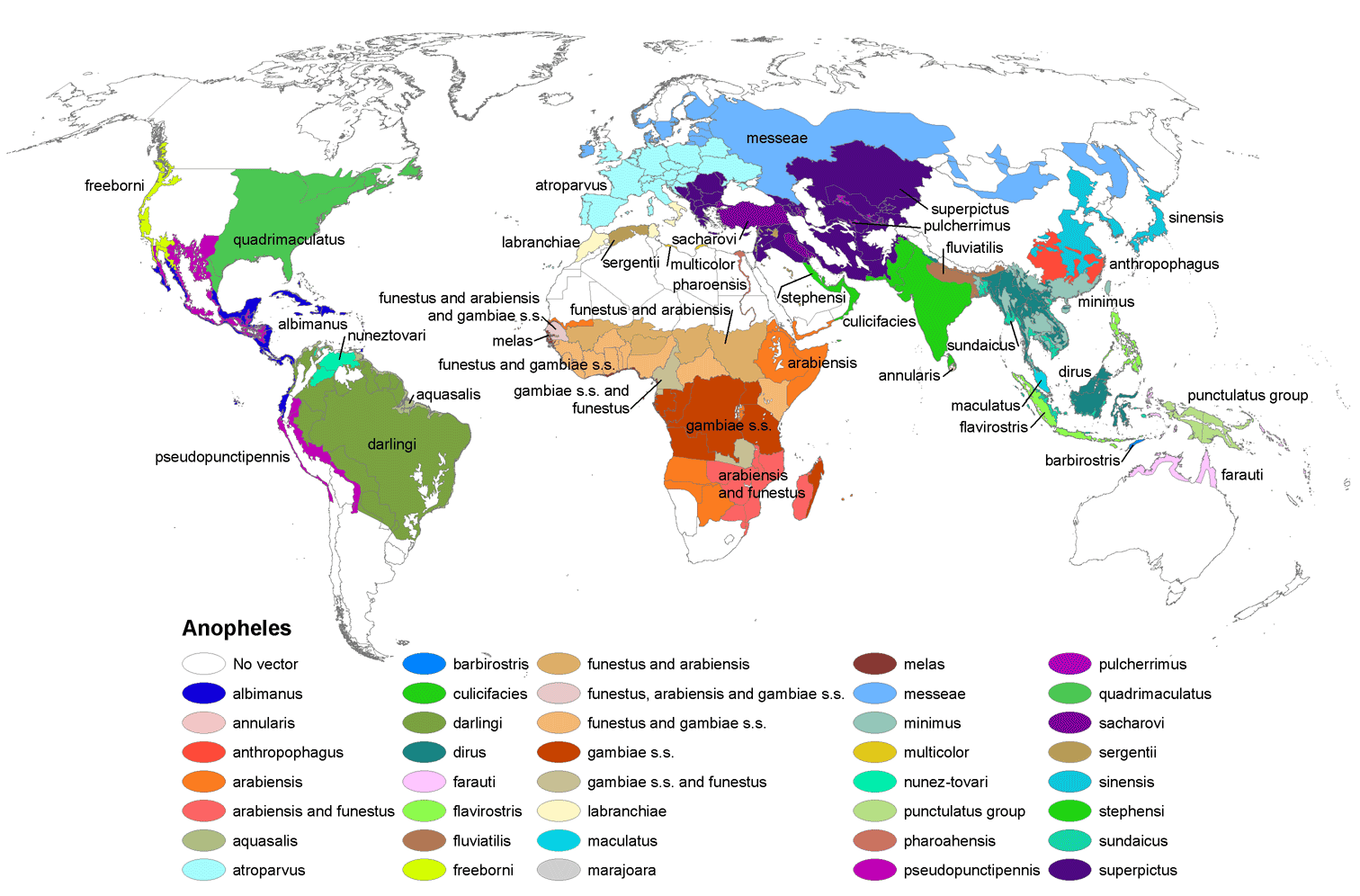|
Anopheles Gambiae
The ''Anopheles gambiae'' complex consists of at least seven morphologically indistinguishable species of mosquitoes in the genus ''Anopheles''. The complex was recognised in the 1960s and includes the most important vectors of malaria in sub-Saharan Africa, particularly of the most dangerous malaria parasite, ''Plasmodium falciparum''. It is one of the most efficient malaria vectors known. The ''An. gambiae'' mosquito additionally transmits ''Wuchereria bancrofti'' which causes lymphatic filariasis, a symptom of which is elephantiasis. Discovery and elements The ''Anopheles gambiae'' complex or ''Anopheles gambiae'' sensu lato was recognized as a species complex only in the 1960s. The ''A. gambiae'' complex consists of: * '' Anopheles arabiensis'' Patton, 1905 * '' Anopheles bwambae'' White, 1985 * '' Anopheles melas'' Theobald, 1903 * '' Anopheles merus'' Dönitz, 1902 * '' Anopheles quadriannulatus'' (Theobald, 1911) * ''Anopheles gambiae'' Giles, 1902 sensu stricto (s.s. ... [...More Info...] [...Related Items...] OR: [Wikipedia] [Google] [Baidu] |
Anopheles Melas
''Anopheles'' () is a genus of mosquito first described by the German entomologist Johann Wilhelm Meigen, J. W. Meigen in 1818, and are known as nail mosquitoes and marsh mosquitoes. Many such mosquitoes are Disease vector, vectors of the parasite ''Plasmodium'', a genus of protozoans that cause malaria in Plasmodium species infecting birds, birds, Plasmodium species infecting reptiles, reptiles, and Plasmodium species infecting mammals other than primates, mammals, including humans. The ''Anopheles gambiae'' mosquito is the best-known species of marsh mosquito that transmits the ''Plasmodium falciparum'', which is a malarial Parasitism, parasite deadly to human beings; no other mosquito genus is a vector of human malaria. The genus ''Anopheles'' diverged from other mosquitoes approximately (myr, mya), and, like other mosquitoes, the eggs, larvae, and pupae are Aquatic animal, aquatic. The ''Anopheles'' larva has no respiratory siphon through which to breathe, so it breathes an ... [...More Info...] [...Related Items...] OR: [Wikipedia] [Google] [Baidu] |
Anopheles Bwambae
''Anopheles'' () is a genus of mosquito first described by the German entomologist J. W. Meigen in 1818, and are known as nail mosquitoes and marsh mosquitoes. Many such mosquitoes are vectors of the parasite ''Plasmodium'', a genus of protozoans that cause malaria in birds, reptiles, and mammals, including humans. The ''Anopheles gambiae'' mosquito is the best-known species of marsh mosquito that transmits the ''Plasmodium falciparum'', which is a malarial parasite deadly to human beings; no other mosquito genus is a vector of human malaria. The genus ''Anopheles'' diverged from other mosquitoes approximately ( mya), and, like other mosquitoes, the eggs, larvae, and pupae are aquatic. The ''Anopheles'' larva has no respiratory siphon through which to breathe, so it breathes and feeds with its body horizontal to the surface of the water. The adult mosquito hatches from the surface and feeds on the nectar of flowers; the female mosquito also feeds on blood, which animal diet ... [...More Info...] [...Related Items...] OR: [Wikipedia] [Google] [Baidu] |
Anopheles
''Anopheles'' () is a genus of mosquito first described by the German entomologist Johann Wilhelm Meigen, J. W. Meigen in 1818, and are known as nail mosquitoes and marsh mosquitoes. Many such mosquitoes are Disease vector, vectors of the parasite ''Plasmodium'', a genus of protozoans that cause malaria in Plasmodium species infecting birds, birds, Plasmodium species infecting reptiles, reptiles, and Plasmodium species infecting mammals other than primates, mammals, including humans. The ''Anopheles gambiae'' mosquito is the best-known species of marsh mosquito that transmits the ''Plasmodium falciparum'', which is a malarial Parasitism, parasite deadly to human beings; no other mosquito genus is a vector of human malaria. The genus ''Anopheles'' diverged from other mosquitoes approximately (myr, mya), and, like other mosquitoes, the eggs, larvae, and pupae are Aquatic animal, aquatic. The ''Anopheles'' larva has no respiratory siphon through which to breathe, so it breathes an ... [...More Info...] [...Related Items...] OR: [Wikipedia] [Google] [Baidu] |
Mosquitoes
Mosquitoes, the Culicidae, are a family of small flies consisting of 3,600 species. The word ''mosquito'' (formed by '' mosca'' and diminutive ''-ito'') is Spanish and Portuguese for ''little fly''. Mosquitoes have a slender segmented body, one pair of wings, three pairs of long hair-like legs, and specialized, highly elongated, piercing-sucking mouthparts. All mosquitoes drink nectar from flowers; females of some species have in addition adapted to drink blood. The group diversified during the Cretaceous period. Evolutionary biologists view mosquitoes as micropredators, small animals that parasitise larger ones by drinking their blood without immediately killing them. Medical parasitologists view mosquitoes instead as vectors of disease, carrying protozoan parasites or bacterial or viral pathogens from one host to another. The mosquito life cycle consists of four stages: egg, larva, pupa, and adult. Eggs are laid on the water surface; they hatch into motile larv ... [...More Info...] [...Related Items...] OR: [Wikipedia] [Google] [Baidu] |
Anopheles Arabiensis
''Anopheles arabiensis'' is a zoophilic species of mosquito and a vector of disease endemic to Africa. Genome Polytene chromosomes have a high degree of gene polymorphism due to paracentric inversions. This is also unusually high for the genus. (See the chapter by Kitzmiller 1976.) There is a well studied adaptive inversion. Kirkpatrick and Barrett 2015 and Sharakhov et al. 2006 find an inversion providing ''A. arabiensis'' with some of its adaptation to arid environments. They also find this inversion has been introgressed across more widely in the genus, providing similar adaptive benefit. Symbionts Not thought to naturally serve as a host of ''Wolbachia'' until Baldini et al. 2018 showed to the contrary. NIHMS 1531069. Hosts Hosts include ''Bos taurus''. ''A. arabiensis'' is especially known as a zoophilic haematophage. Parasites Not a vector of '' Plasmodium berghei''. Range The distribution is Afrotropical. There was a brief invasion into Brazil in 1930 ... [...More Info...] [...Related Items...] OR: [Wikipedia] [Google] [Baidu] |
Proceedings Of The National Academy Of Sciences
''Proceedings of the National Academy of Sciences of the United States of America'' (often abbreviated ''PNAS'' or ''PNAS USA'') is a peer-reviewed multidisciplinary scientific journal. It is the official journal of the National Academy of Sciences, published since 1915, and publishes original research, scientific reviews, commentaries, and letters. According to ''Journal Citation Reports'', the journal has a 2022 impact factor of 9.4. ''PNAS'' is the second most cited scientific journal, with more than 1.9 million cumulative citations from 2008 to 2018. In the past, ''PNAS'' has been described variously as "prestigious", "sedate", "renowned" and "high impact". ''PNAS'' is a delayed open-access journal, with an embargo period of six months that can be bypassed for an author fee ( hybrid open access). Since September 2017, open access articles are published under a Creative Commons license. Since January 2019, ''PNAS'' has been online-only, although print issues are available ... [...More Info...] [...Related Items...] OR: [Wikipedia] [Google] [Baidu] |
Malaria Journal
The ''Malaria Journal'' is a peer-reviewed open access medical journal published by BioMed Central. It was established in 2002 and covers research on malaria and related topics. The editor-in-chief is Marcel Hommel (University of Liverpool). Abstracting and indexing The journal is abstracted and indexed in: According to the ''Journal Citation Reports'', the journal has a 2014 impact factor The impact factor (IF) or journal impact factor (JIF) of an academic journal is a type of journal ranking. Journals with higher impact factor values are considered more prestigious or important within their field. The Impact Factor of a journa ... of 2.80. References External links * Academic journals established in 2002 Malaria BioMed Central academic journals Creative Commons Attribution-licensed journals Microbiology journals English-language journals {{microbiology-journal-stub ... [...More Info...] [...Related Items...] OR: [Wikipedia] [Google] [Baidu] |
Biology Letters
''Biology Letters'' is a peer-reviewed scientific journal published by the Royal Society, established in 2005. It focuses on the rapid publication of short research articles, reviews, and opinion pieces across the biological sciences. The editor-in-chief is David Beerling FRS (University of Sheffield). Contents As well as conventional short research articles, the journal has recently published ''Special Features'' and ''Mini Series''. Special Features are collections of up to 20 articles on a specific theme and published across multiple issues. Mini Series include up to six articles that are published in one issue. History The journal was split off from the '' Proceedings of the Royal Society B: Biological Sciences'' in 2005 after having been published as a supplement. Originally it was published quarterly, then bimonthly, and since 2013 it has been published monthly. Printing ceased at the start of 2020. Abstracting and indexing The journal is abstracted and indexed in: Accord ... [...More Info...] [...Related Items...] OR: [Wikipedia] [Google] [Baidu] |
Comparative Anatomy
Comparative anatomy is the study of similarities and differences in the anatomy of different species. It is closely related to evolutionary biology and phylogeny (the evolution of species). The science began in the classical era, continuing in the early modern period with work by Pierre Belon who noted the similarities of the skeletons of birds and humans. Comparative anatomy has provided evidence of common descent, and has assisted in the classification of animals. History The first specifically anatomical investigation separate from a surgical or medical procedure is associated by Alcmaeon of Croton. Leonardo da Vinci made notes for a planned anatomical treatise in which he intended to compare the hands of various animals including bears. Pierre Belon, a French naturalist born in 1517, conducted research and held discussions on dolphin embryos as well as the comparisons between the skeletons of birds to the skeletons of humans. His research led to modern comparative a ... [...More Info...] [...Related Items...] OR: [Wikipedia] [Google] [Baidu] |
Transactions Of The Royal Society Of Tropical Medicine And Hygiene
''Transactions of the Royal Society of Tropical Medicine and Hygiene'' is a monthly peer-reviewed medical journal covering all aspects of tropical medicine. It is the official journal of the Royal Society of Tropical Medicine and Hygiene and is published by Oxford University Press. According to the ''Journal Citation Reports'', the journal has a 2018 impact factor of 2.820. The journal published the first report on Zika virus Zika virus (ZIKV; pronounced or ) is a member of the virus family ''Flaviviridae''. It is spread by daytime-active ''Aedes'' mosquitoes, such as '' A. aegypti'' and '' A. albopictus''. Its name comes from the Ziika Forest of Uganda, where ... in 1952. References External links * {{Official website, http://trstmh.oxfordjournals.org/ Oxford University Press academic journals Monthly journals English-language journals Publications established in 1908 Tropical medicine and hygiene journals Academic journals associated with learned and prof ... [...More Info...] [...Related Items...] OR: [Wikipedia] [Google] [Baidu] |
Species Complex
In biology, a species complex is a group of closely related organisms that are so similar in appearance and other features that the boundaries between them are often unclear. The taxa in the complex may be able to hybridize readily with each other, further blurring any distinctions. Terms that are sometimes used synonymously but have more precise meanings are cryptic species for two or more species hidden under one species name, sibling species for two (or more) species that are each other's closest relative, and species flock for a group of closely related species that live in the same habitat. As informal taxonomic ranks, species group, species aggregate, macrospecies, and superspecies are also in use. Two or more taxa that were once considered conspecific (of the same species) may later be subdivided into infraspecific taxa (taxa within a species, such as plant variety (botany), varieties), which may be a complex ranking but it is not a species complex. In most cases, a specie ... [...More Info...] [...Related Items...] OR: [Wikipedia] [Google] [Baidu] |



